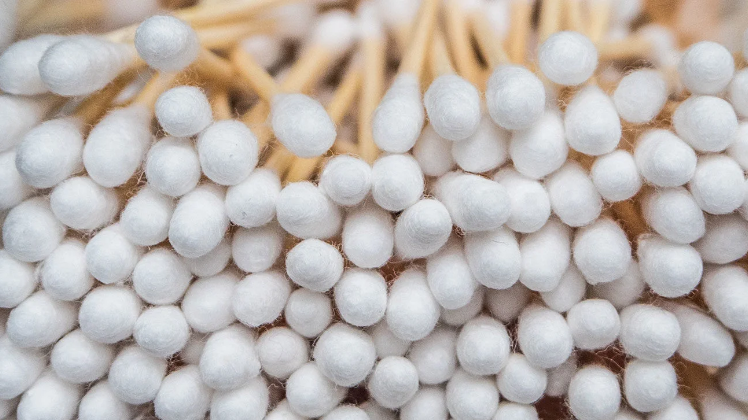Putting cotton buds inside your ear can lead to harm, impacted earwax, or infection. If you feel your ears are blocked, it’s advisable to consult a healthcare professional for assistance.
The common purpose of this action is to clear earwax from the ear canal. However, although it’s safe to clean the outer ear with a cotton bud, it’s best to refrain from using them inside your ear.
Using cotton buds inside your ear is linked to various complications, including injury and infection.
Let’s delve deeper into this topic and explore ways to safely clean your ears.
Potential damage
Earwax is beneficial for your ears as it prevents them from becoming too dry, traps dirt, and hinders bacteria from penetrating deeper into your ear.
With time, earwax naturally moves towards the outer ear where it can be removed.
Since your ears are self-cleansing, it’s often unnecessary to clean them manually. Nonetheless, a survey found that 68% of respondents admitted to using cotton buds to clean their ears.
Earwax blockage
Using a cotton bud to remove earwax from your ear can actually push it deeper inside, preventing natural clearance and causing a buildup.
Accumulation of excessive earwax can result in uncomfortable symptoms such as:
- Pain
- A sensation of fullness in the ear
- Reduced hearing ability
Injury
Inserting a cotton bud too deeply into your ear can potentially harm the structures of your middle ear. A common ear injury associated with cotton bud usage is a ruptured eardrum.
A study conducted in 2017 examined cotton bud-related ear injuries in children from 1990 to 2010. They found that around 73% of ear injuries caused by cotton buds were linked to ear cleaning.
Infections
Earwax assists in trapping and inhibiting the growth of bacteria in the ear canal. Using a cotton bud can push earwax and the bacteria it contains further into the ear, potentially leading to an ear infection.
Foreign object in the ear
In some instances, the tip of the cotton bud may detach inside your ear, causing discomfort, a feeling of fullness, or pain. In severe cases, it may even lead to hearing loss.
A study investigated common objects responsible for emergency room visits due to foreign bodies in the ear, with cotton buds being one of the most frequent foreign objects among adults.
What to do if you experience pain
In the short term, you can use over-the-counter pain relievers like ibuprofen or paracetamol to alleviate pain. If ear pain persists after three days of home care, consult your doctor.
If you experience a sudden, sharp pain in your ear after using a cotton bud, accompanied by symptoms like reduced hearing or ringing in your ears, seek medical attention immediately. You may have sustained an ear injury.
How to safely clean your ears
If you wish to safely remove earwax, follow these four steps:
- Soften: Carefully add a few drops of baby oil, mineral oil, or glycerin into your ear using a dropper. This helps soften the earwax.
- Irrigate: After a couple of days, irrigate your ear. Use a bulb syringe to add warm water to your ear canal.
- Drain: After irrigating, gently tilt your head to the side to allow the water to drain from your ear.
- Dry: Use a clean towel to dry the outer part of your ear.
Individuals with ear tubes, suspected ear infections, or ruptured eardrums should avoid cleaning their ears in this manner.
When to seek medical advice
Generally, you shouldn’t usually require medical assistance to clean your ears. However, if earwax builds up excessively or becomes too hard for natural clearance, even without the use of cotton buds, consult your doctor if you experience any of the following symptoms:
The bottom line
Given that your ears are self-cleaning, it’s often unnecessary to remove earwax manually. Using cotton buds to clean inside your ears can lead to various ear problems, including earwax blockage, injury, and infection.
If you feel the need to clean your ears, soften the earwax first and then irrigate your ear with warm water, allowing it to drain naturally. Never insert objects like cotton buds into your ear canal.

